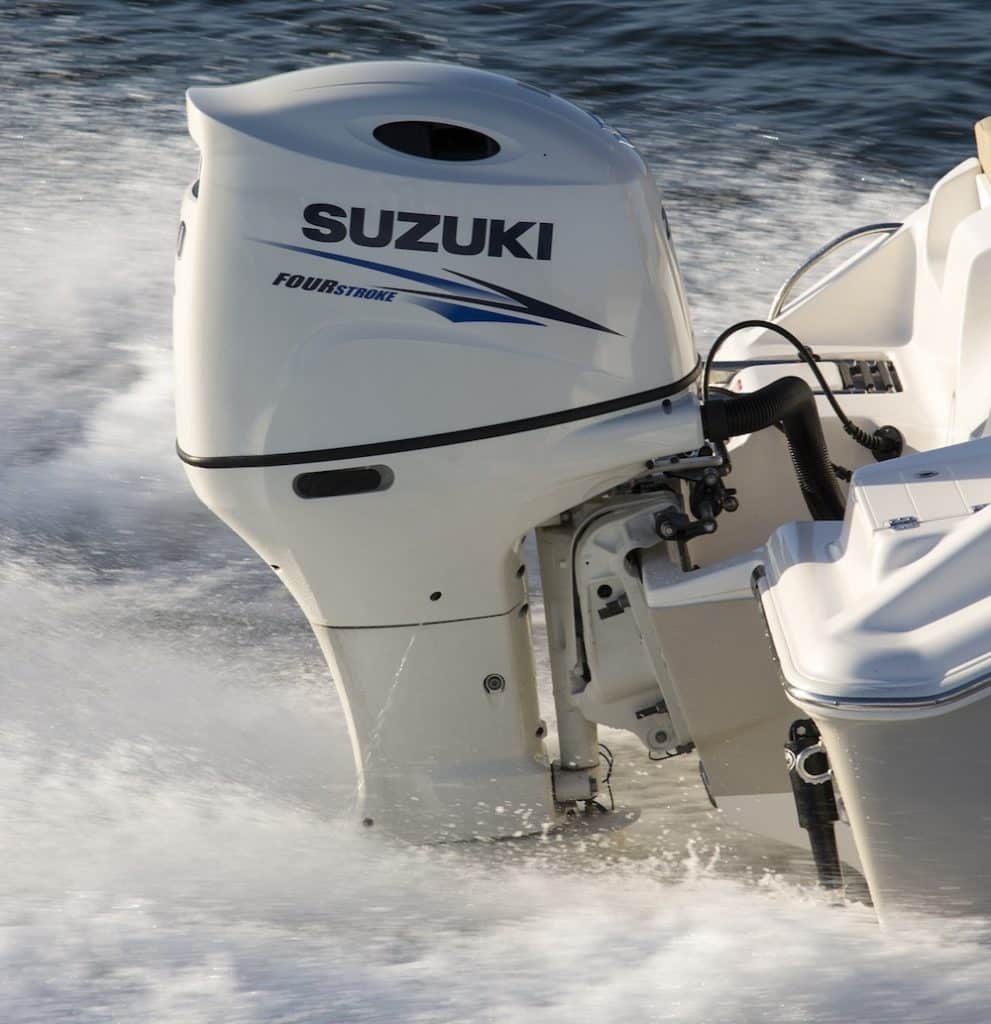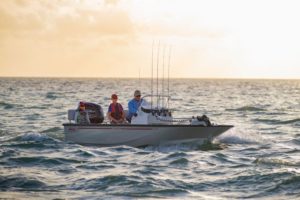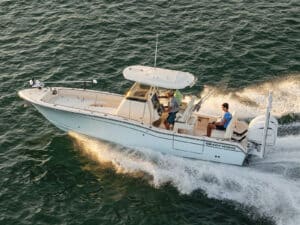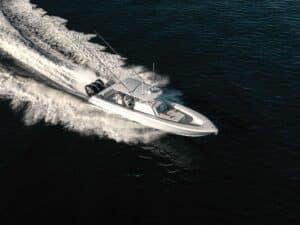
Suzuki’s New Four-Cylinder DF200A Outboard Engine
Suzuki Marine has pulled the wraps off a new series of compact 200 hp outboards featuring inline four-cylinder blocks and boasting a host of advanced features. I had a chance to run the new DF200A engines outside the Ocean Reef Club in Key Largo, Florida – first on a Key West 219FS with a single engine and then on a new Twin Vee 31 Ocean Cat with twin 200s.
Displacement is 175 cubic inches – the same as Suzuki’s existing four-cylinder DF175A outboard and 12 cubic inches more than Yamaha’s four-cylinder F200. The Suzuki’s DF200A weighs 498 pounds, 12 percent less than the V-6 version of Suzuki’s 200 outboard. Yamaha’s four-cylinder F200 weighs 487 pounds.
Innovative Features
Suzuki engineered the DF200A with a 10.3:1 compression ratio (9.7 percent greater than in the DF175A) and a new cowling to provide cooler air directly to the engine’s long-track tuned intake manifold. Twin intake and exhaust valves allow the engine to breathe more efficiently. Suzuki’s Lean Burn Technology that optimizes the fuel-to-air mixture once you establish a cruising rpm also contributes to efficiency. Knock, oxygen and water-detection sensors monitor and control engine operating parameters, resulting in superb reliability.
These new outboards serve boating anglers in two primary ways. First, the relatively narrow inline design (versus a wider V-6 block) lends itself well to twin-engine installations on a V-hull. Secondly, the lighter mass of the DF200A (versus the V-6 version) means that you can repower older boats (originally designed for lighter two-stroke outboards) with this new generation of four-strokes.
Suzuki will offer the new engines with both digital (DF200AP) and mechanical (DF200A) control systems. The AP model will also include Suzuki’s Selective Rotation, for multi-engine installations, and keyless ignition.
How They Ran
First I took out the Key West 219FS with a white DF200A. (Suzuki offers many of its engines now in either winter white or it traditional charcoal.) Turning a 1.5-inch by 16-inch three-blade stainless steel prop, we accelerated from zero to planing speed in 5.7 seconds and to 30 mph in 10.7 seconds with three adult males and a half-tank of gasoline. Top speed was 44.8 mph at 6,000 rpm. With the Twin Vee 31 Ocean Cat running twin DF200A outboards with 20-inch by 16-inch three-blade stainless props, the top speed averaged 43.8 mph with six adult males aboard.
We were unable to obtain complete performance numbers, as Suzuki is still fine-tuning the digital mapping and propping of these engine. Once production engines are out (expected sometime this fall), I plan on bringing your more detailed performance data.
In the meantime, Suzuki is poised to serve the fishing boat market better than ever with a series of outboards that provides alternatives to V-6 four-strokes for propelling new boats and repowering older boats.








